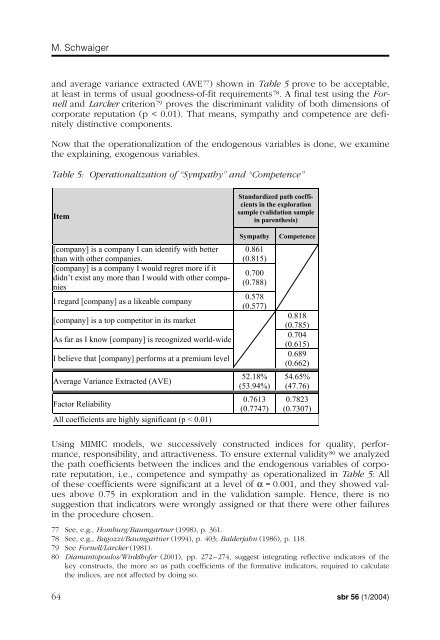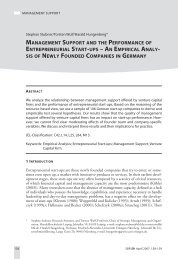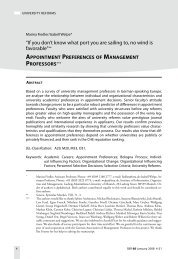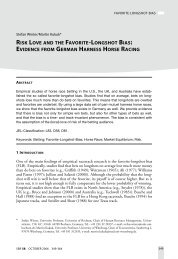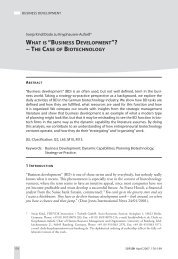components and parameters of corporate reputation - sbr ...
components and parameters of corporate reputation - sbr ...
components and parameters of corporate reputation - sbr ...
You also want an ePaper? Increase the reach of your titles
YUMPU automatically turns print PDFs into web optimized ePapers that Google loves.
M. Schwaiger<br />
<strong>and</strong> average variance extracted (AVE 77) shown in Table 5 prove to be acceptable,<br />
at least in terms <strong>of</strong> usual goodness-<strong>of</strong>-fit requirements 78. A final test using the Fornell<br />
<strong>and</strong> Larcker criterion 79 proves the discriminant validity <strong>of</strong> both dimensions <strong>of</strong><br />
<strong>corporate</strong> <strong>reputation</strong> (p < 0.01). That means, sympathy <strong>and</strong> competence are definitely<br />
distinctive <strong>components</strong>.<br />
Now that the operationalization <strong>of</strong> the endogenous variables is done, we examine<br />
the explaining, exogenous variables.<br />
Table 5: Operationalization <strong>of</strong> “Sympathy” <strong>and</strong> “Competence”<br />
�����<br />
��������������������������������������������������<br />
���������������������������<br />
�������������������������������������������������<br />
����������������������������������������������������<br />
������<br />
�����������������������������������������<br />
��������������������������������������������<br />
���������������������������������������������������<br />
����������������������������������������������������<br />
���������������������������������<br />
�������������������<br />
���������������������������������������������������<br />
�������������������������<br />
��������������������������<br />
���������������������������<br />
����������������<br />
��������� �����������<br />
������<br />
��������<br />
������<br />
��������<br />
������<br />
��������<br />
77 See, e.g., Homburg/Baumgartner (1998), p. 361.<br />
78 See, e.g., Bagozzi/Baumgartner (1994), p. 403; Balderjahn (1986), p. 118.<br />
79 See Fornell/Larcker (1981).<br />
80 Diamantopoulos/Winklh<strong>of</strong>er (2001), pp. 272 – 274, suggest integrating reflective indicators <strong>of</strong> the<br />
key constructs, the more so as path coefficients <strong>of</strong> the formative indicators, required to calculate<br />
the indices, are not affected by doing so.<br />
64 <strong>sbr</strong> 56 (1/2004)<br />
�<br />
�������<br />
���������<br />
�������<br />
���������<br />
�<br />
������<br />
��������<br />
������<br />
(�������<br />
������<br />
��������<br />
�������<br />
��������<br />
�������<br />
���������<br />
Using MIMIC models, we successively constructed indices for quality, performance,<br />
responsibility, <strong>and</strong> attractiveness. To ensure external validity 80 we analyzed<br />
the path coefficients between the indices <strong>and</strong> the endogenous variables <strong>of</strong> <strong>corporate</strong><br />
<strong>reputation</strong>, i.e., competence <strong>and</strong> sympathy as operationalized in Table 5: All<br />
<strong>of</strong> these coefficients were significant at a level <strong>of</strong> α = 0.001, <strong>and</strong> they showed values<br />
above 0.75 in exploration <strong>and</strong> in the validation sample. Hence, there is no<br />
suggestion that indicators were wrongly assigned or that there were other failures<br />
in the procedure chosen.


